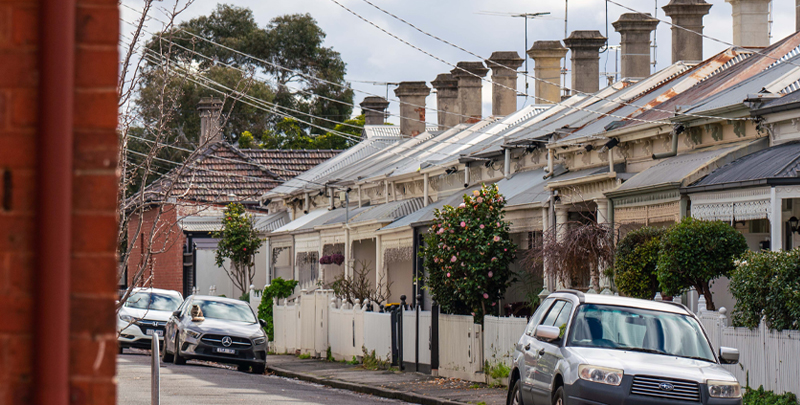Like other major cities around the world, Melbourne has undergone significant gentrification of once undesirable, working class suburbs. But what does gentrification actually look like? And how should it shape our investment selection process?
Gentrification is the process where a neighbourhood undergoes urban renewal and revitalisation, typically leading to increased property values, which sees lower-socioeconomic residents replaced by more affluent newcomers.
Firstly, it’s important to understand that gentrification is generally a very slow process; it doesn’t happen overnight, though there are exceptions. One being Melbourne’s COVID-19 lockdowns, which prompted a significant demographic shift and increased demand for regional properties.
But typically, gentrification takes decades, slowly transforming once working-class neighbourhoods in inner-city areas; or once-fringe locations into desirable middle-ring suburbs.
There are several key factors that drive Melbourne’s gentrification process, and understanding these can be crucial when deciding which suburbs to invest in.
Underdeveloped or undercapitalised land is often a primary driver of gentrification. These might be pockets of land in need of redevelopment, such as infill sites that have remained undeveloped or dormant for an extended period.
For example, the former Kodak site in Coburg North or the Defence site in Maribyrnong. Rezoning is often the catalyst. Properties that may have had different uses in the past might no longer represent the highest and best use of the site under current conditions. This rezoning can open up opportunities for new residential development.
Brunswick provides an excellent example. Historically, this area was dominated by light industrial properties used for manufacturing, especially during the mid-20th century around the 1950s and 60s. At that time, the surrounding suburbs were predominantly occupied by working-class individuals, with employment opportunities closely tied to the nearby factory work.
However, as Melbourne’s population and housing demands have grown, the suburbs’ close proximity to the CBD and bohemian culture became a hit with younger upwardly mobile residents, which saw the underlying land value increase.
Developers then spotted the opportunity and transformed once industrial buildings into trendy residential homes.
Streetscape renovations and upgrades can also be a major factor driving gentrification. A great example is Nicholson Street in Abbotsford, which traditionally lacked a village atmosphere.
Recent developments along Nicholson Street have introduced quality cafes and restaurants on the ground floor with upscale apartments above, significantly contributing to the area’s gentrification.
This transformation has enhanced both the commercial atmosphere and the residential quality, leading to improved retail strips. Melbourne’s renowned café culture is a major drawcard for upwardly mobile buyers, so the presence of high-quality shops and restaurants is crucial.
High Street in Northcote, recently celebrated as one of the best commercial strips globally, is a prime example of how strategic property renovation and mixed-use development can drive the transformation of an area.
Improved infrastructure is another catalyst for gentrification. Extending public transport to link outer suburbs with the city can make a suburb more connected and attractive. So can roadway expansions, such as the North East Link and the West Gate Tunnel.
Additionally, the development of healthcare facilities, such as the new Western Hospital in Footscray, provides numerous employment opportunities, attracting more upwardly mobile residents to the area.
Educational facilities are another major driver of gentrification, though it’s often a chicken-or-egg scenario: does gentrification drive improvements in education, or does enhanced educational facilities drive gentrification? Northcote High School is a prime example; as Northcote has gentrified, the school has become a desirable factor, driving property values up within its zone.
The Bridesmaid suburb effect is another factor. Suburbs that neighbour sought after areas are often gentrified, as buyers seek affordable alternatives that still offer similar styles, services, and access to amenities as pricier neighbouring areas.
A tale of two suburbs
Originally a working-class suburb, Richmond was populated with miners’ cottages and basic terrace houses. The area was home to a large migrant population following the post-war immigration boom, a factor that was accentuated when the Housing Commission towers were built in the 1960s.
As we moved into the 1990s, the inner-city lifestyle became increasingly desirable. Richmond’s proximity to the city and its retail strips, especially Bridge Road, contributed to its popularity.
Additionally, the proximity to the MCG became a significant draw as AFL games began to centralise around larger stadiums.
More recently, the area known as Cremorne, or “Silicon Yarra,” has seen a tech boom, further enhancing Richmond’s appeal alongside the development of Swan Street’s cafes and restaurants. Richmond exemplifies the gentrification process, highlighting the various elements that contribute to a suburb’s evolution.
Reservoir in the northern suburbs is still undergoing gentrification. It benefits from the development along High Street, with the popularity of Northcote and Thornbury spilling over into the suburb.
Reservoir offers a mix of mid-century housing and villa units, appealing to those interested in mid-century fashion and furnishings. There are also numerous opportunities for developers to build modern dwellings and townhouses, offering a variety of housing types.
It also boasts excellent transport links, great parklands, and access to the amenities of neighbouring Preston. This ‘bridesmaid effect’ enhances its attractiveness, suggesting that Reservoir will continue to gentrify.
Take home message
Gentrification can be an important factor, but it should only form part of the investment equation.
The process of gentrification can span years, is often unpredictable, and is difficult to pinpoint.
Relying on speculative factors such as prospective rezoning or shifts in urban sprawl, which may not materialise, is risky.
However, staying informed about the clear – already occurring – shifts we’ve highlighted above should effectively guide your investment decisions and help you capitalise on Melbourne’s ever evolving demographics.

